*NURSING > CASE STUDY > LVN VN39 SKINNY Reasoning case study parts 1 and 2 (answered)/ SKINNY Reasoning JoAnn Smith is a 68- (All)
LVN VN39 SKINNY Reasoning case study parts 1 and 2 (answered)/ SKINNY Reasoning JoAnn Smith is a 68-year-old woman who presents to the emergency department (ED)
Document Content and Description Below
LVN VN39 SKINNY Reasoning case study parts 1 and 2 (answered)/ SKINNY Reasoning JoAnn Smith is a 68-year-old woman who presents to the emergency department (ED). SKINNY Reasoning Part I: Recognizing ... RELEVANT Clinical Data History of Present Problem: JoAnn Smith is a 68-year-old woman who presents to the emergency department (ED) after having three days of progressive weakness. She denies chest pain, but admits to shortness of breath (SOB) that increases with activity. She also has epigastric pain with nausea that has been intermittent for 20-30 minutes over the last three days. She reports that her epigastric pain has gotten worse and is now radiating into her neck. Her husband called 9-1-1 and she was transported to the hospital by emergency medical services (EMS). Personal/Social History: JoAnn is a recently retired math teacher who continues to substitute teach part-time. She is physically active and lives independently with her spouse in her own home. She has smoked 1 pack per day the past 40 years. JoAnn appears anxious and immediately asks repeatedly for her husband upon arrival. What data from the histories are RELEVANT and must be interpreted as clinically significant by the nurse? (Reduction of Risk Potential) What VS data are RELEVANT and must be recognized as clinically significant by the nurse? What assessment data is RELEVANT and must be recognized as clinically significant by the nurse? What data must be interpreted as clinically significant by the nurse? (Reduction of Risk Potential/Physiologic Adaptation) Radiology Report: Chest x-ray What diagnostic results are RELEVANT and must be recognized as clinically significant to the nurse? Part II: Put it All Together to THINK Like a Nurse! 1. After interpreting relevant clinical data, what is the primary problem? Collaborative Care: Medical Management 2. State the rationale and expected outcomes for the medical plan of care. (Pharm. and Parenteral Therapies) 3. What nursing priority (ies) will guide your plan of care? (Management of Care) 4. What psychosocial/holistic care priorities need to be addressed for this patient? (Psychosocial Integrity/Basic Care and Comfort) 5. What educational/discharge priorities need to be addressed to promote health and wellness for this patient and/or family? (Health Promotion and Maintenance) [Show More]
Last updated: 1 year ago
Preview 1 out of 7 pages

Reviews( 0 )
Document information
Connected school, study & course
About the document
Uploaded On
Jun 11, 2021
Number of pages
7
Written in
Additional information
This document has been written for:
Uploaded
Jun 11, 2021
Downloads
0
Views
43

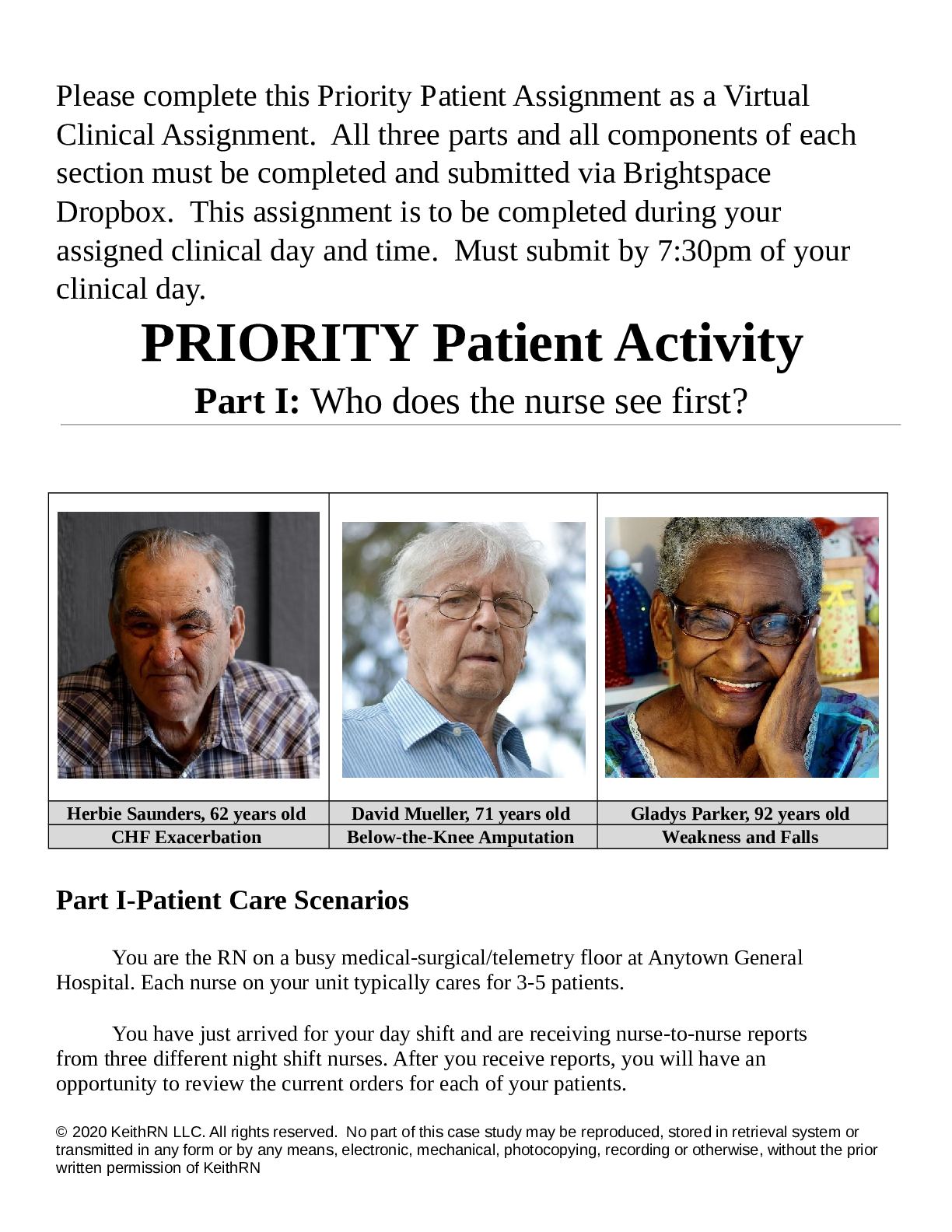
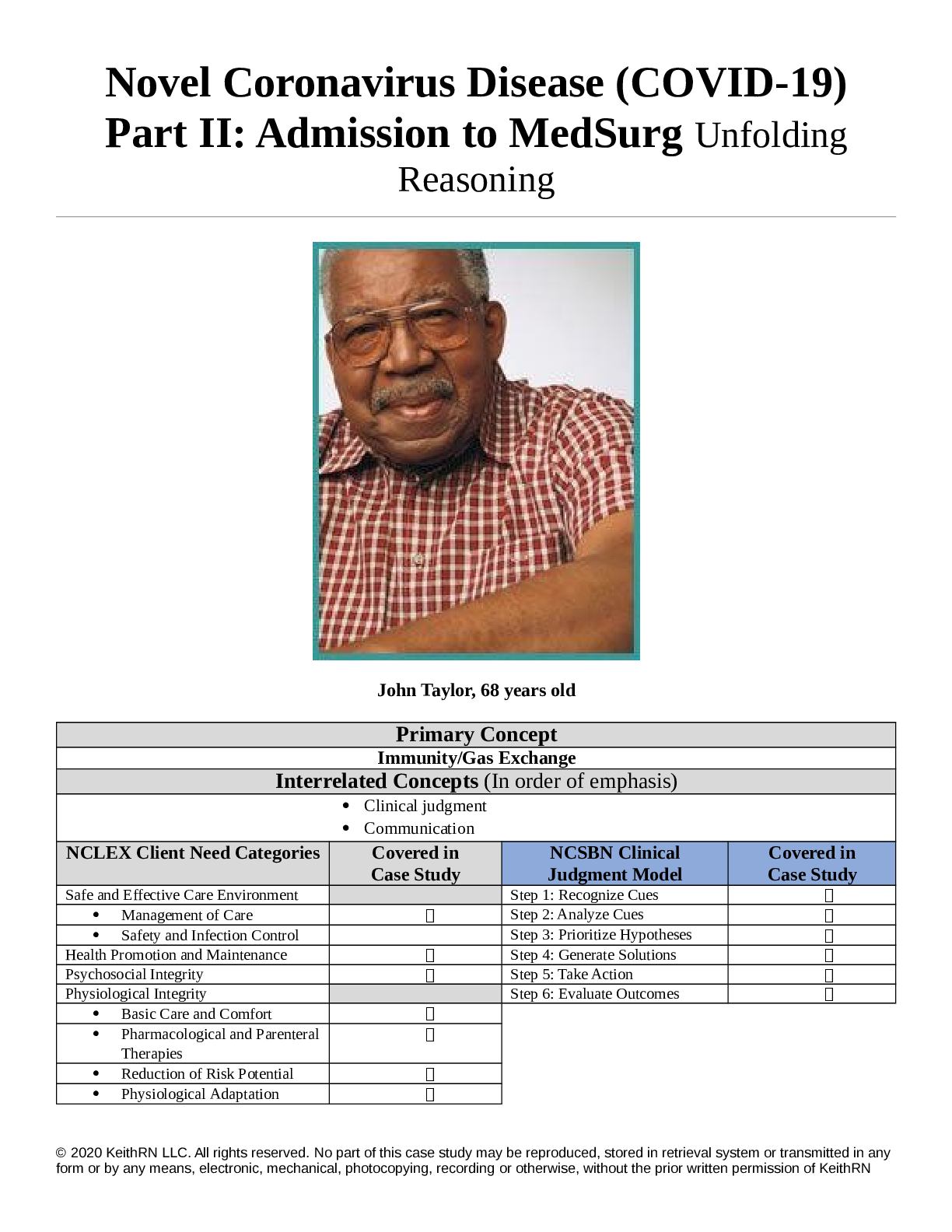

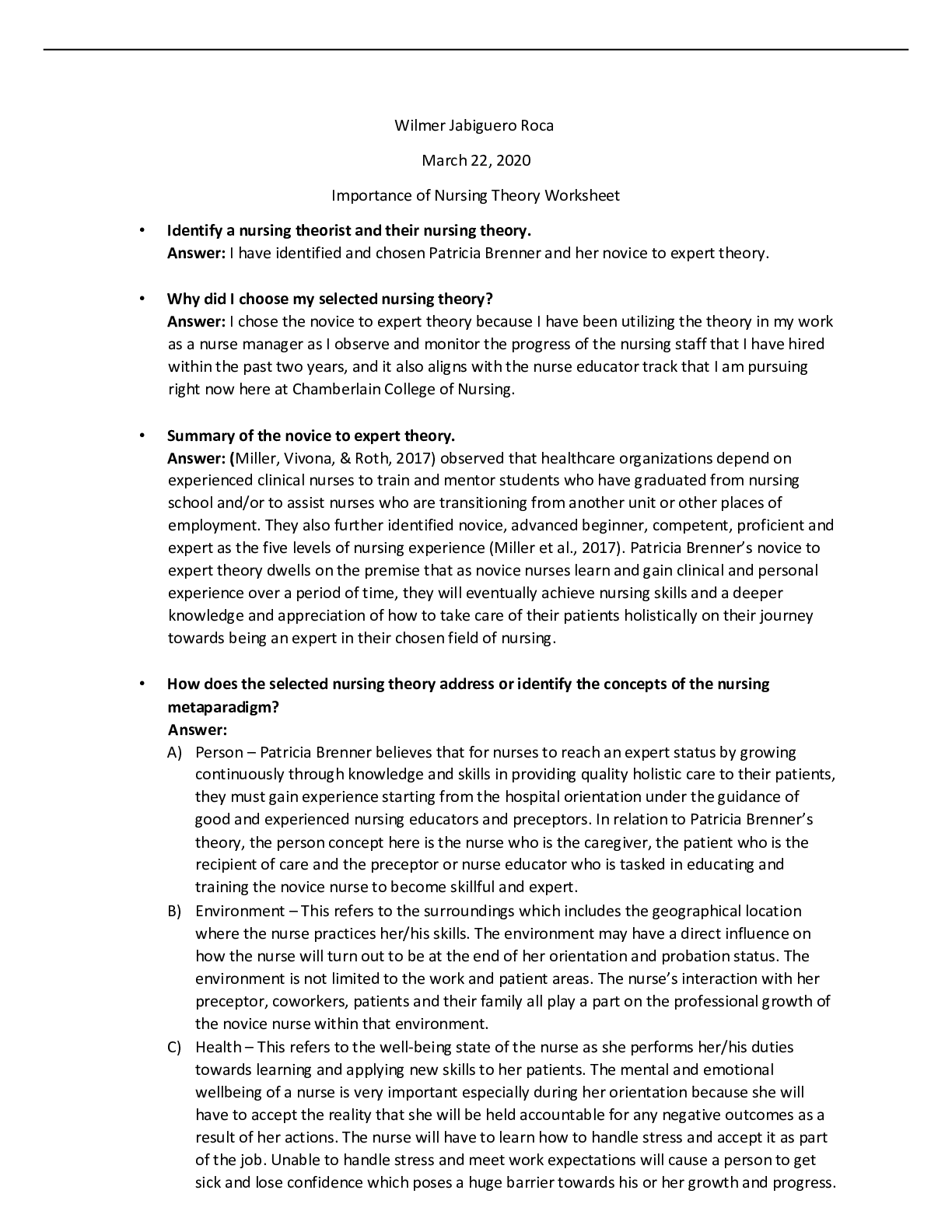
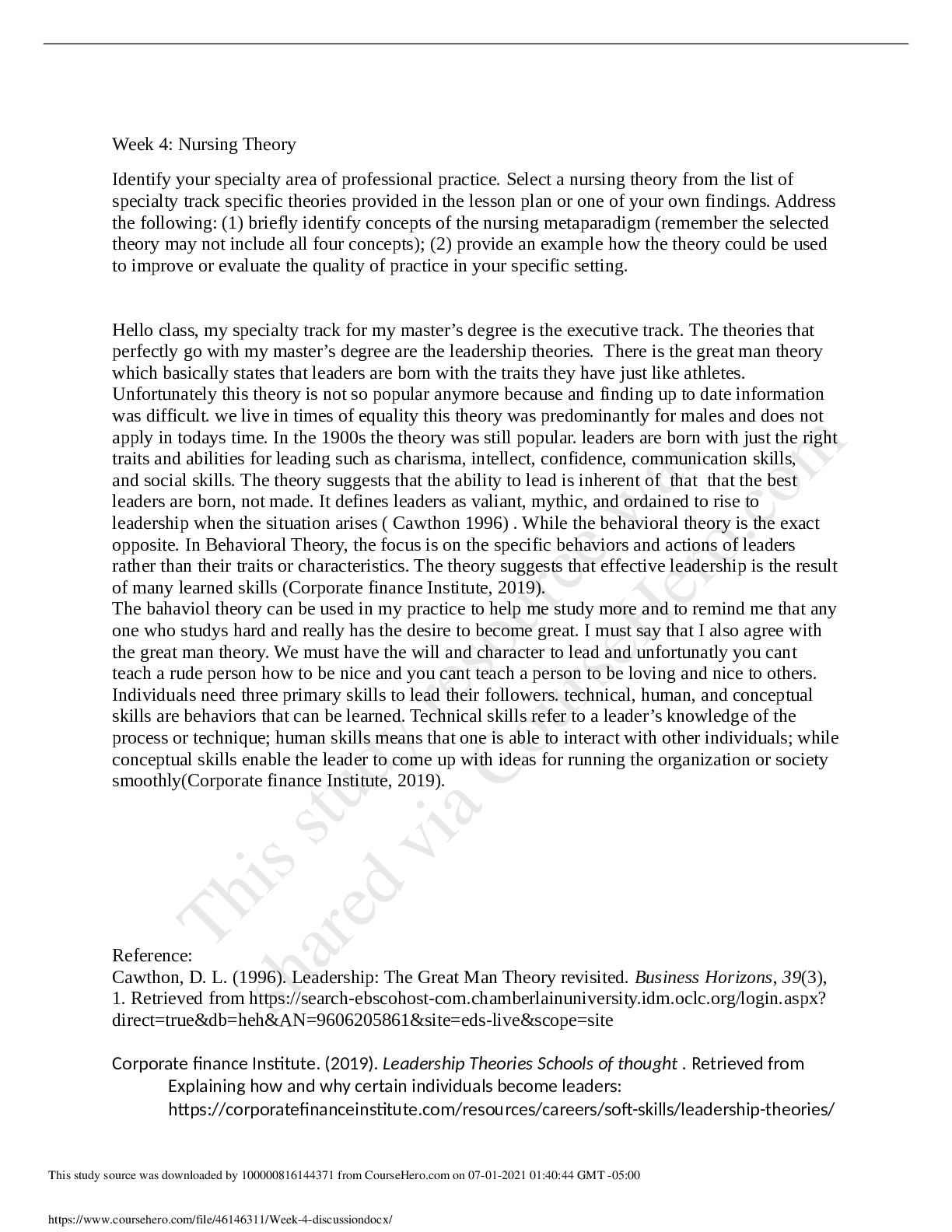
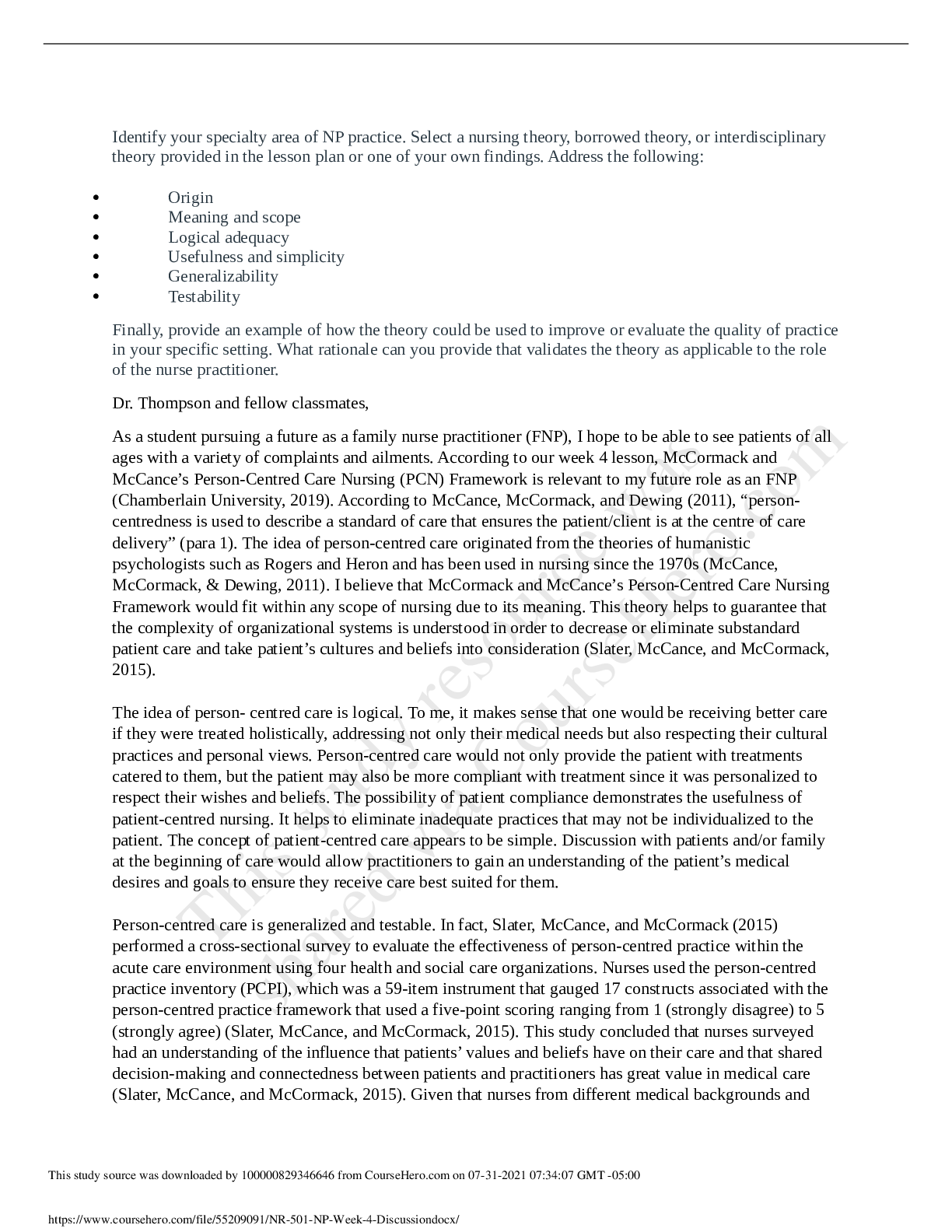


.png)
.png)

.png)
.png)

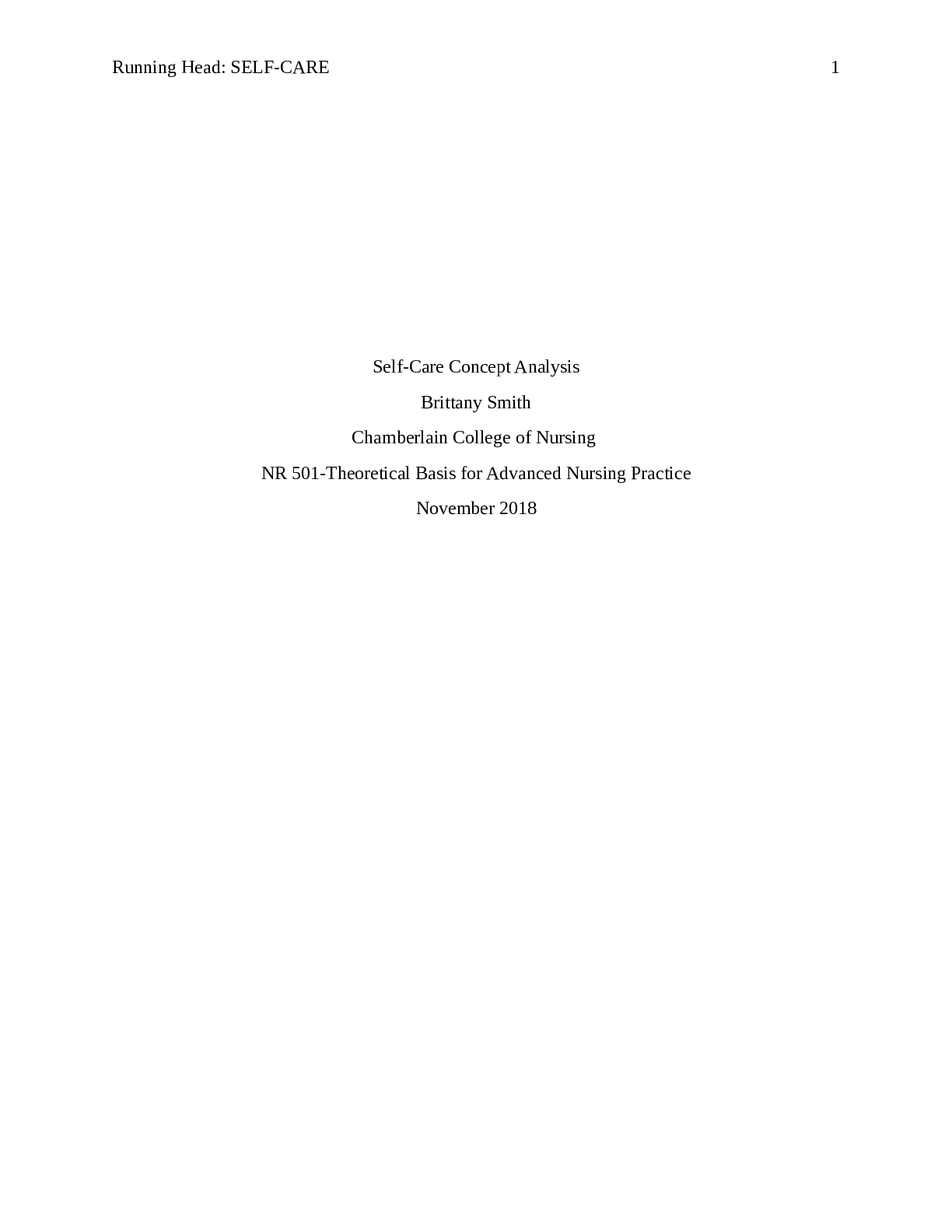
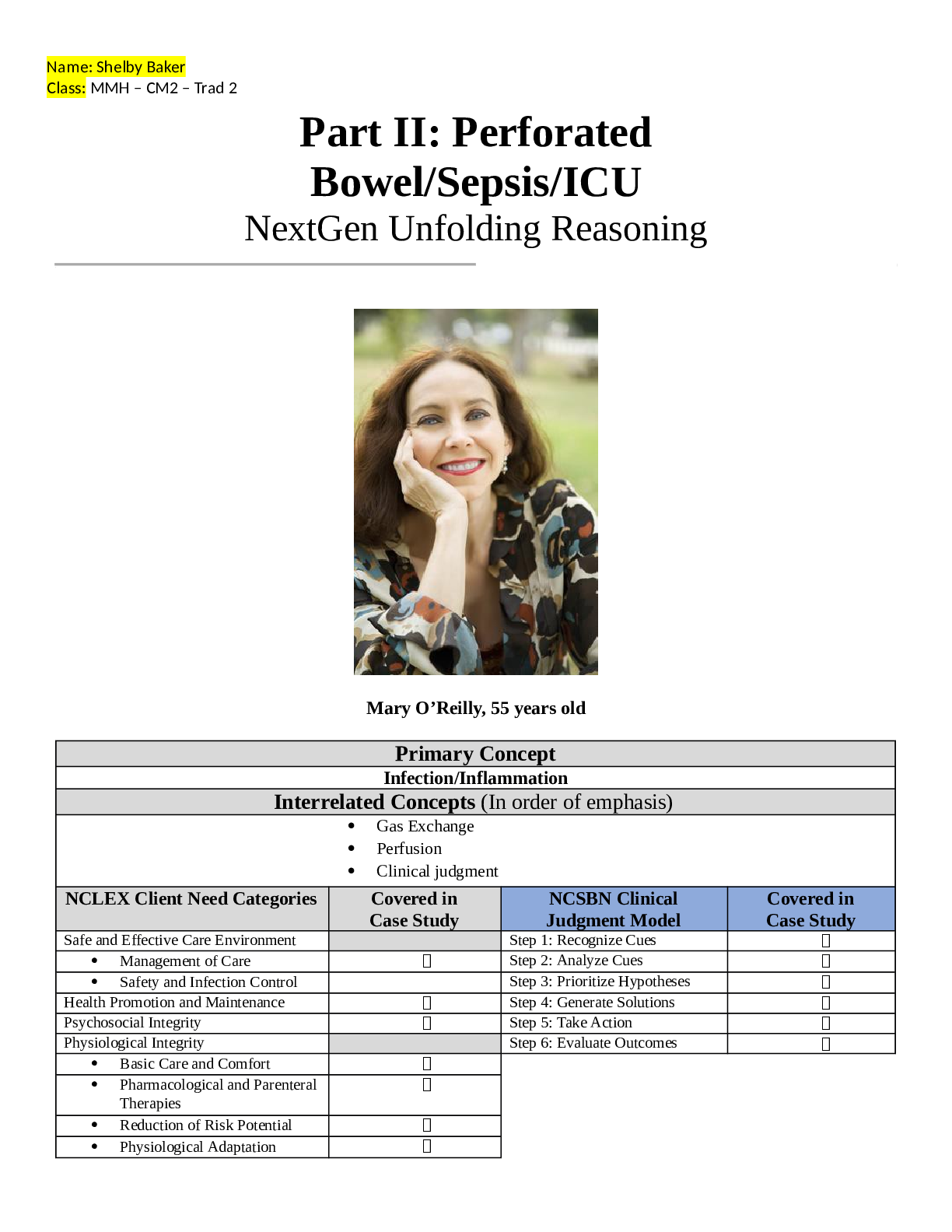



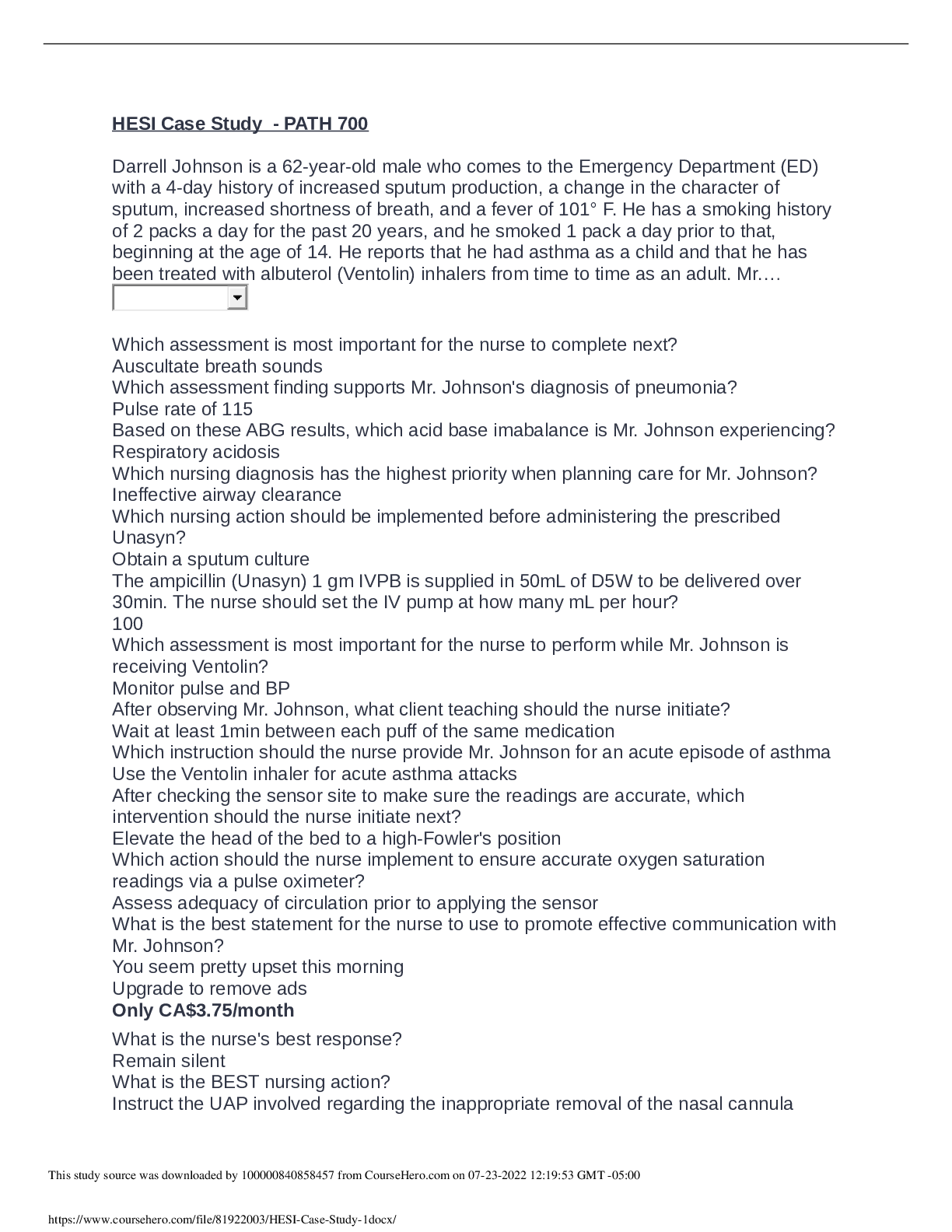
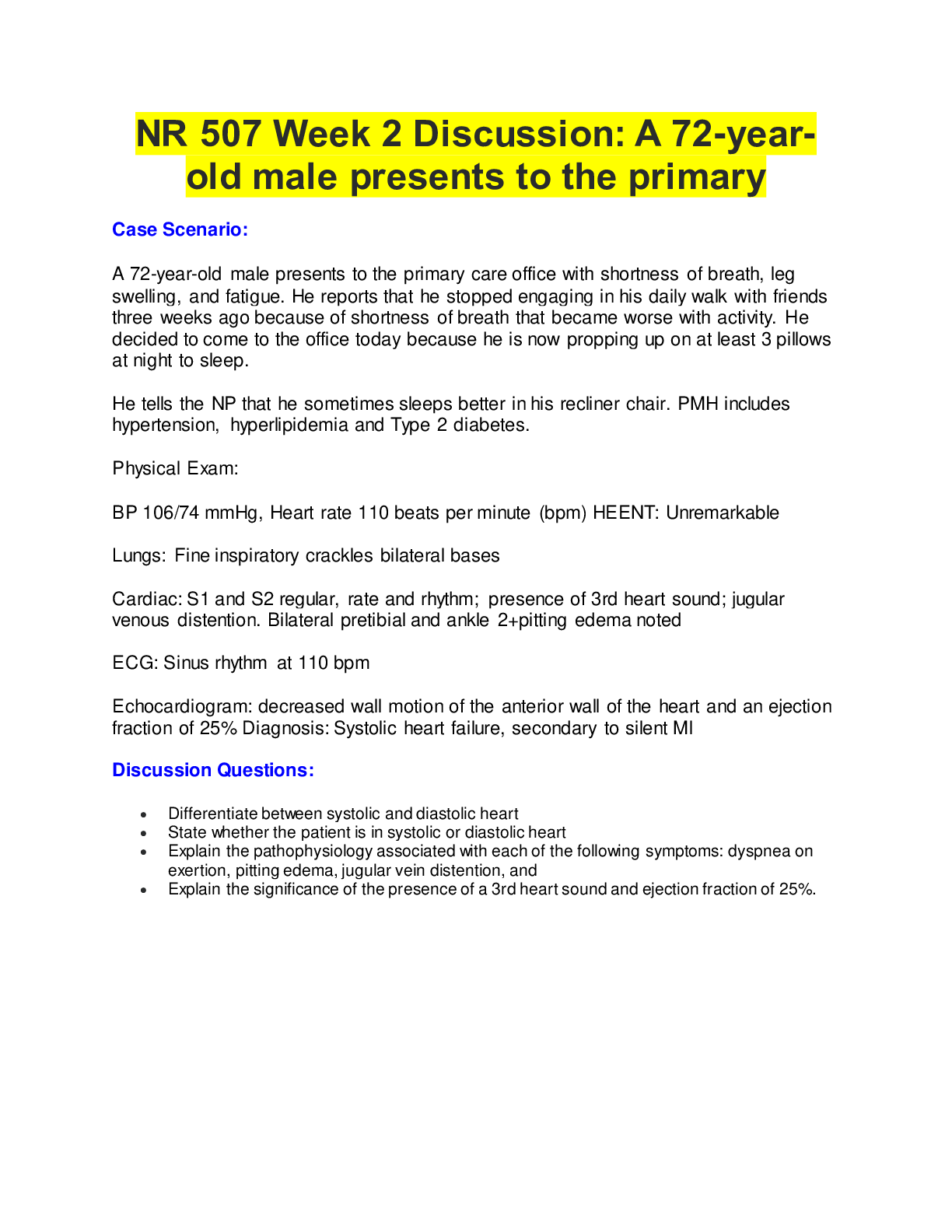
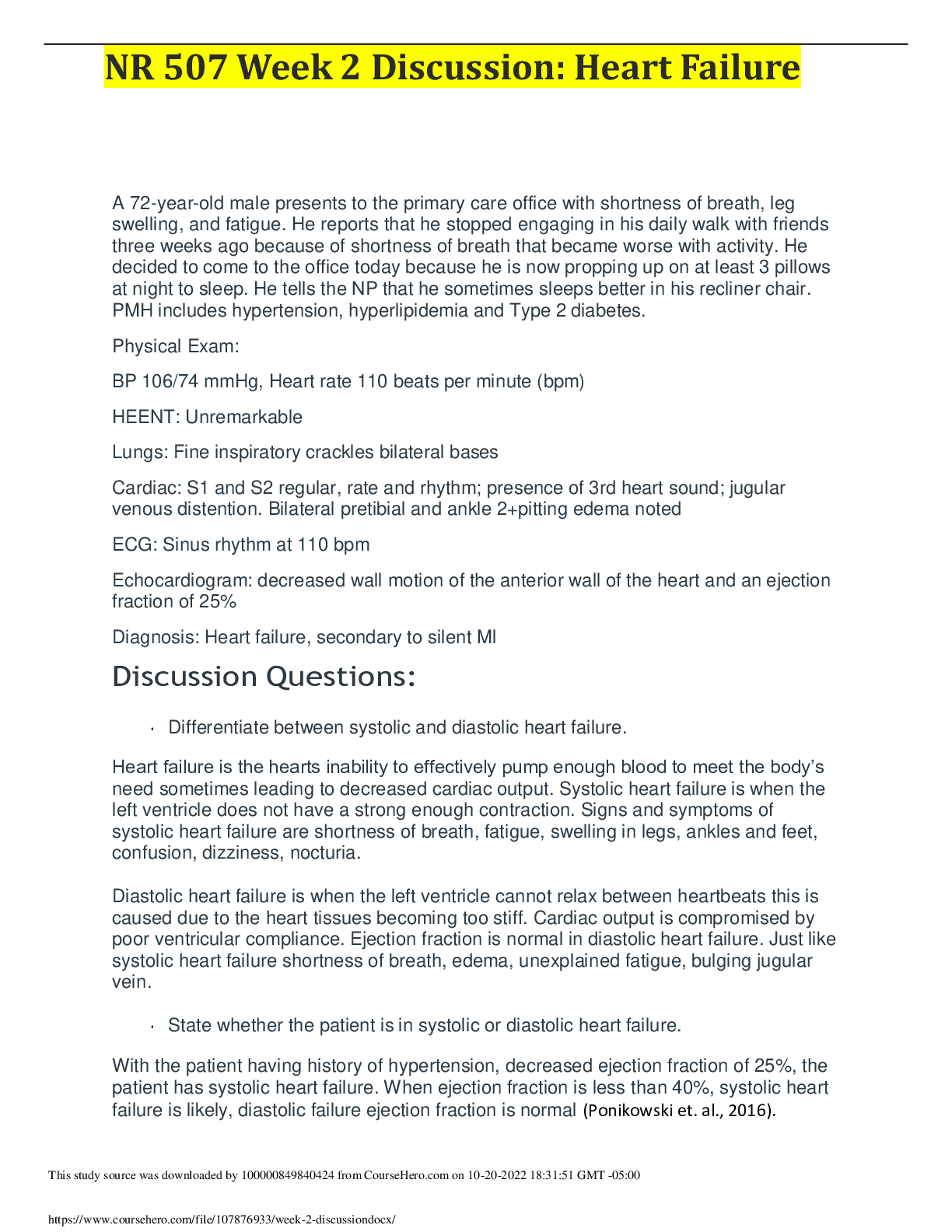

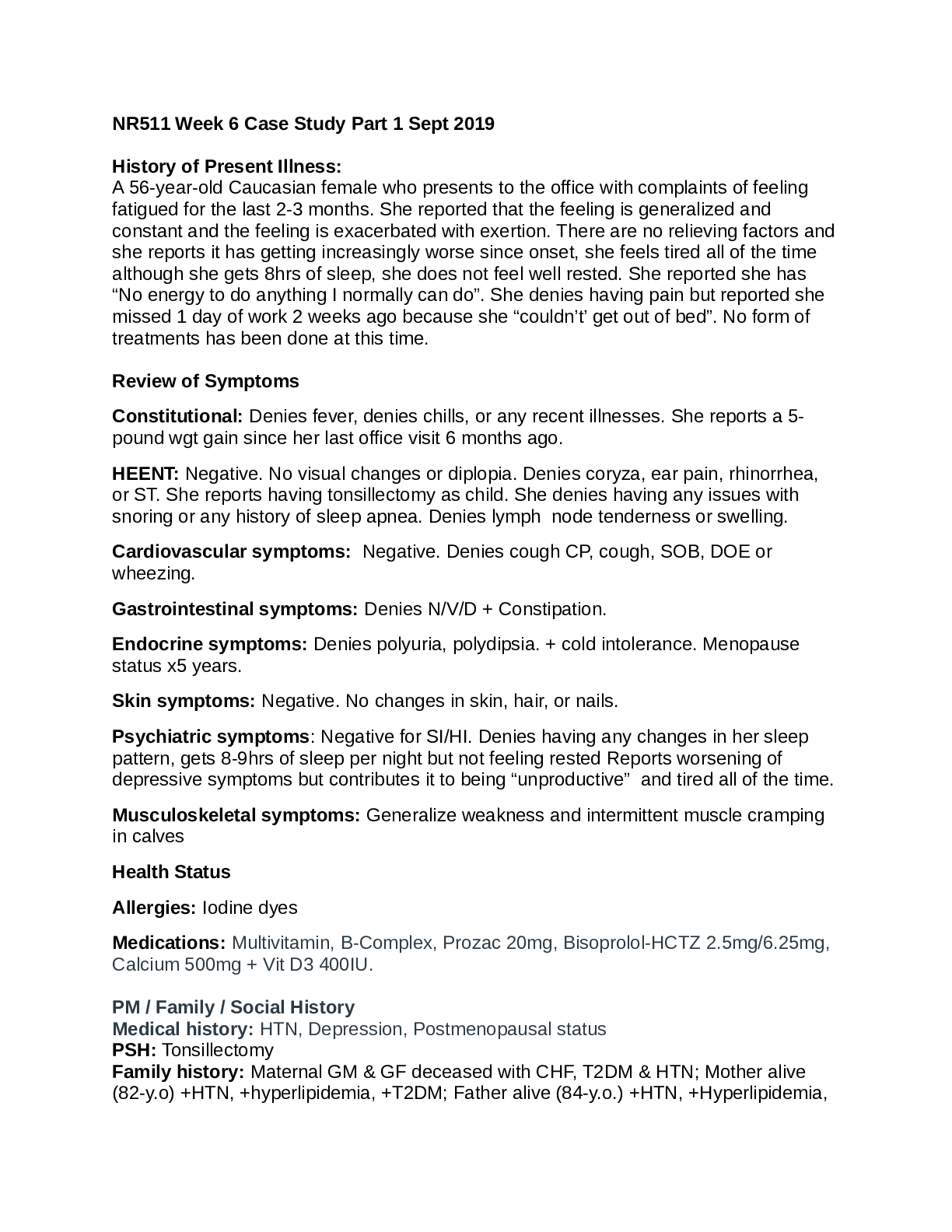
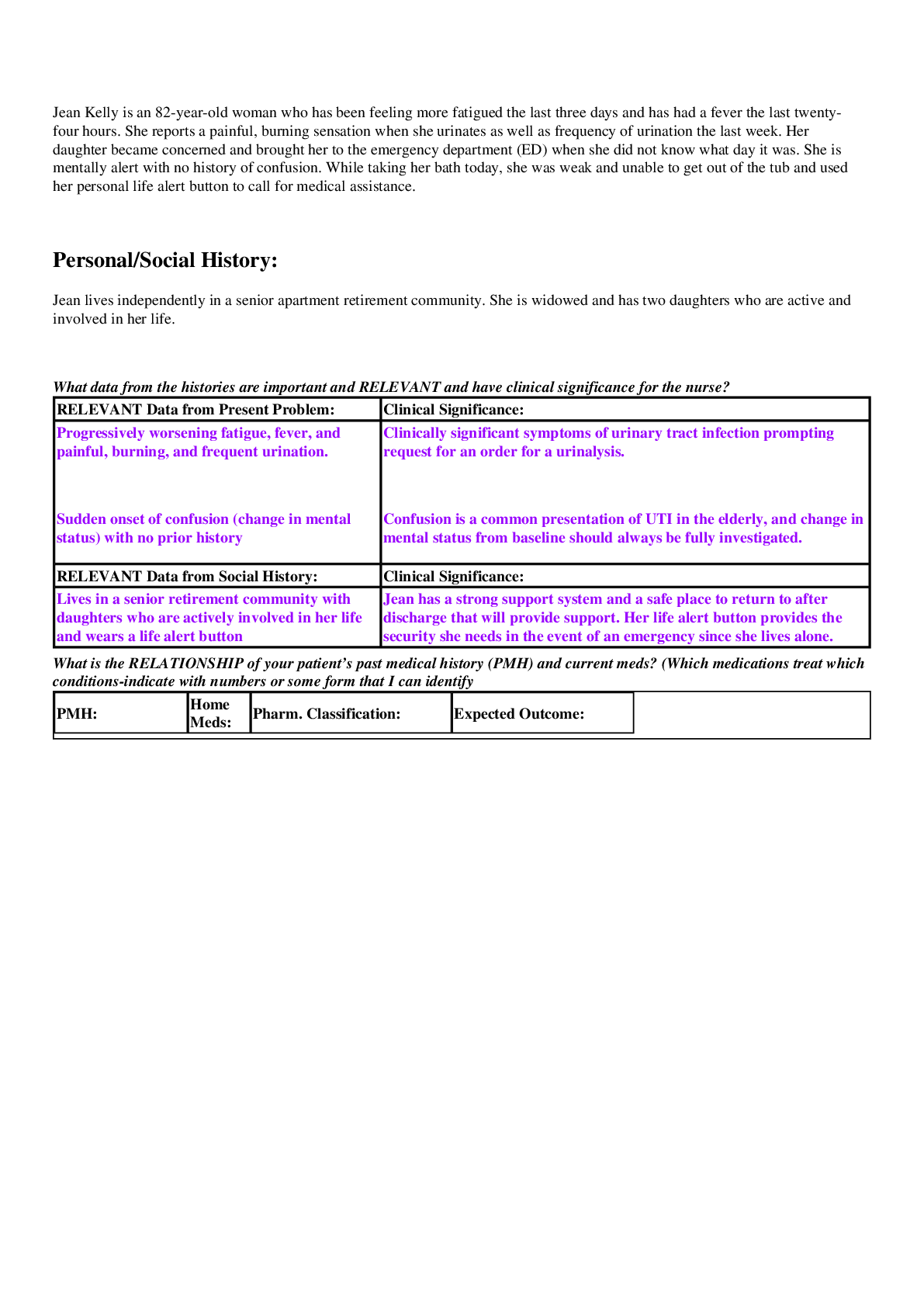

, SKINNY Reasoning, John Taylor, 68 years old, (Latest 2021) Correct Study Guide, Download to Score A.png)
, Unfolding Reasoning, John Taylor, 68 years old, (Latest 2021) Correct Study Guide, Download to Score A.png)


, SKINNY Reasoning, John Taylor, 68 years old, 68 years old, (Latest 2021) Correct Study Guide, Download to Score A.png)


